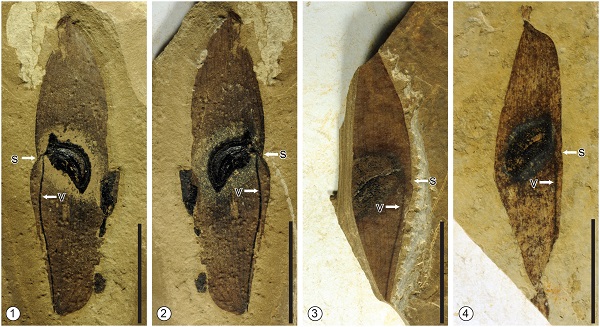
The genus Ailanthus (Simaroubaceae) consists of six extant species in the form of deciduous or evergreen trees.
Researchers from Xishuangbanna Tropical Botanical Garden (XTBG) found some well- preserved Ailanthus samara (namely winged seed) fossils located along the Bangong-Nujiang Suture Zone between the Qiangtang and Lhasa Terrane in central Tibetan Plateau.
The collected Ailanthus fossils range from 59.7 to 60.6 mm, so compared to others they are the largest Ailanthus samara fossils found so far. Their main ventral vein is located in the intramarginal part of the samara, and the stylar scar is at the same level as the middle of the seed.
Their morphological characteristics are different from the existing fossil species. XTBG researchers thus regarded that the Ailanthus fossils represent a new species and named it as Ailanthus maximus and got it published in Palaeogeography, Palaeoclimatology, Palaeoecology.
Based on samara characteristics, the fossil species A. maximus is close to the extant A. triphysa which is distributed in tropical and subtropical regions in South Asia. It may represent a warm and humid climate, and lowland along Bangong-Nujiang Suture Zone existed in Central Tibetan Plateau.
“The finding of the new fossil species expands the known spatial distribution of Ailanthus in the Paleogene. It also suggests that the Tibetan Plateau has played an important role in the migration of biota between Gondwanan India and the Northern Hemisphere,” said Prof. SU Tao, principal investigator of the study.

Samara fossils of Ailanthus maximus (Image by SU Tao)

86-10-68597521 (day)
86-10-68597289 (night)

52 Sanlihe Rd., Xicheng District,
Beijing, China (100864)

